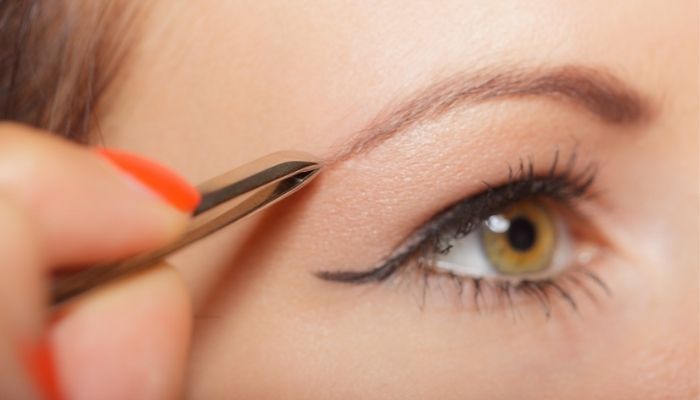Ingrown hair, as the name suggests is the hair that grows inside the skin instead of outside the skin. The problem may sound small to many of us, but only those who suffer from an ingrown nail, are aware of its pain and discomfort. An ingrown hair can be irritating to your skin and then you may look for all the possible ways how to treat ingrown hair?
Let us help you understand all about ingrown hair and how to remove ingrown hair without any side effects.
What is Ingrown Hair?
When any of your hair bends back and re-enters your skin or grows within the skin, it is called ingrown hair or a razor bump. Sometimes, a hair follicle is clogged due to dead skin leading the hair to grow sideways under the skin. Besides, cutting curly hair too short is also a possible reason to get ingrown hair because then the end of the hair tends to grow inside by piercing your skin. A razor bump or ingrown hair usually occurs on the armpits, legs, chins, cheeks, neck, and pubic area.Common Causes of Ingrown Hair
The problem of ingrown hair is faced mainly due to the following reasons. This problem of ingrown hair is usually seen in people with coarse or curly hair because such hair tends to bend back and often re-enter the skin after a cut or shaving.Besides, many times a higher level of sex hormones could also give rise to the problem of ingrown hair. Apart from this, other causes of ingrown hair are sometimes shaving, waxing, and tweezing the hair. Sometimes, wearing tight clothes also tends to clog the hair follicle leading to the problem of ingrown hair.
Common Symptoms of Ingrown Hair
Let us now check some common signs of ingrown hair:- Sore that looks like a boil
- Extreme discomfort
- A red bump like a small pimple
- Uncontrollable itching
- Bumps with pus inside
How to Treat Ingrown Hair?
Listed below are the best Ingrown Hair Treatment Options:- Stop Shaving and Waxing: The first way to handle your ingrown hair is by stopping shaving and waxing around the affected area until the ingrown hair is treated, else it may worsen the situation further.
- Dislodging using a Sterile Needle: If the problem of your ingrown hair is severe, then your doctor may try to dislodge it using a sterilized small needle.
- Topical Steroid Creams: Second ingrown treatment prescribed by many doctors is in the form of topical steroid creams to reduce the inflammation on the skin.
- Topical Retinoid Creams: Besides, some doctors prescribe topical retinoid creams like Retin-A too to thinner the topmost skin layer, so that the ingrown hair grows out of the skin. Retin-A will also reduce the chances of skin pigmentation.
- Topical Antibiotics: If the ingrown hair has grown due to a bacterial infection inside your skin, then in those rare cases, the doctor may suggest an oral antibiotic. Otherwise, the doctors generally prescribe topical antibiotics only.
- Laser Hair Removal: These days, many doctors advise you to remove your ingrown hair with a laser hair removal treatment.
How to Remove Ingrown Hair with Home Remedies?
Many people experience relief trying the following home remedies to get rid of ingrown hair:- Scrubbing Sugar and Oil: Make a sugar scrub mixing one cup of sugar with a half cup of olive oil or add a few drops of any essential oil. Gentle rub this scrub on the affected area and later on rinse it off with lukewarm water.
- Magic of Baking Soda: Make a mix of one spoon of baking soda in half a cup of water. Dab this solution using a cotton ball on the affected area and leave it for five minutes. Rinse it off later with cold water.
- Aspirin Remedy: Another ingrown hair treatment at home can be by dissolving two tablets of aspirin in a spoon of warm water. Now, add a spoon of honey and half a spoon of water to form a paste. Apply this paste to the affected area, leave it for about 5 to 10 minutes and rinse off later with warm water.
- Castor Oil or Tea Tree Oil: Apply castor oil or tea tree oil directly on the affected area and leave for about 10 to 15 minutes. Later on, don’t rinse but wipe it off gently using a damp towel.
How to Prevent Ingrown Hair Problems?
Prevention as they say is always better than the cure, and so is the case with the problem of ingrown hair. Improper shaving techniques are believed to be the most common trigger for the problem of ingrown hair. If you suffer from a razor bump, you must look for ways on how to remove ingrown hair but otherwise, always try the following preventive measures to keep this problem aside:- Try to wet your skin before shaving and shave in the same direction of your hair growth.
- Shave in slow circular motions if using electrical razors.
- Try using fewer strokes when shaving.
- Try to use a multi-blade razor to prevent the problem of an ingrown hair



